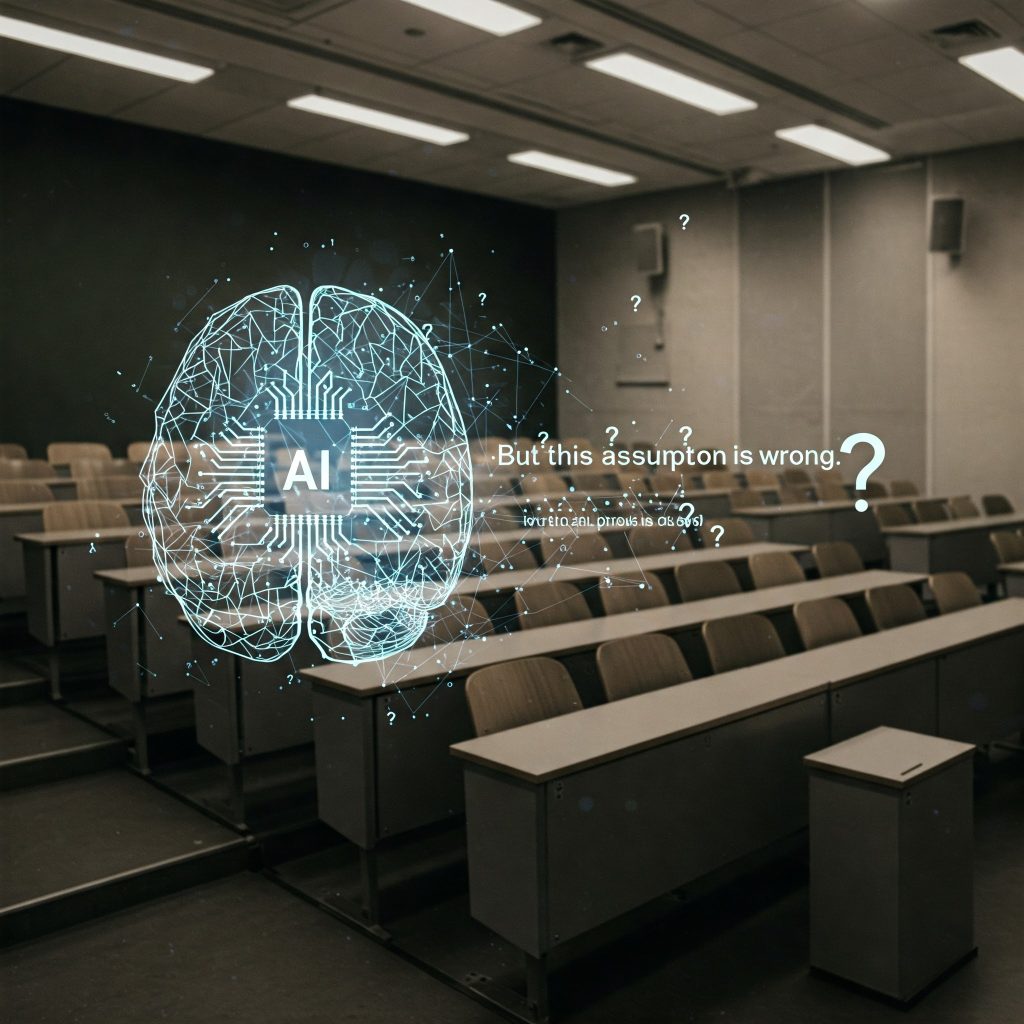
Universities, as we know them, are dead. Or at least, they are dying. The culprit? It’s not just artificial intelligence (AI). It’s our stubborn adherence to outdated educational structures—structures designed for a world that no longer exists.
For decades, we’ve built universities around the professor as the central figure of knowledge dissemination. Rows of students sit passively in lecture halls, listening to an instructor deliver the same content, year after year. The assumption is simple: students learn best by absorbing information from an expert.
But this assumption is wrong.
AI is proving just how wrong it is.
A Crisis in Higher Education—And a Personal Reckoning
My journey as an educator started traditionally. I lectured. I graded. I did what was expected of me. But over time, I started to realize something deeply unsettling: I had no real way of knowing if my students were learning. Sure, they took notes. They nodded along. But did they understand? Were they engaged?
I began questioning everything. Why were my students struggling? Why did some thrive while others barely kept up? More importantly, why were the most intelligent students often the least engaged?
As a mechanical engineering student myself, I skipped many of my own classes. Not because I wasn’t interested in the material, but because I could learn it better on my own. I could read the textbook at my own pace, pause where I needed to, and skip ahead when I was ready.
My experience wasn’t unique. And today’s students? They have even less patience for the traditional university model.
AI as the Great Equalizer
Then came AI.
In November 2022, ChatGPT was released, and within days, I knew that everything about education was about to change. AI had the power to do what no university ever could: provide every single student with a personal tutor, available 24/7.
The evidence is already undeniable. A recent study on Nigerian students using GPT-4 as a tutor found that six weeks of AI-assisted learning produced two years’ worth of academic gains (De Simone et al., 2025). That’s not a small improvement—it’s an educational revolution.
This kind of progress is simply not possible in a traditional classroom.
The Problem with Universities
Universities are designed around uniformity. Every student receives the same syllabus, the same lectures, the same assignments. But students are not uniform. They come from different backgrounds, with different levels of preparation, different learning speeds, and different interests.
Yet, we expect them all to keep up at the same pace.
This is an absurd way to teach.
Imagine a professor walks into a classroom. They assume:
1. Every student is equally prepared for new content.
2. Every student learns at the same pace.
3. The subject matter is static and doesn’t need to evolve.
4. The best way to assess learning is through standardized tests.
None of this holds up under scrutiny.
Some students are already ahead. Some are struggling. Some are disengaged. And most are sitting there, trying to cram information into their heads, only to forget it after the exam.
This is not education. It’s content distribution.
AI Is Already Doing What Universities Cannot
In the courses I taught after the release of AI, I decided to test a new approach. Instead of lectures, I let AI guide students through learning at their own pace. Instead of pre-determined assignments, I let students define their own projects based on their interests.
The results were staggering.
Students who had struggled in traditional classes were suddenly thriving. They were learning faster. They were more engaged. And most importantly, they were thinking critically—because AI forced them to.
A student in my class used AI to develop a deep learning model for stock price prediction. Another created an AI-powered tool to analyze sports performance. One built a real-time workout assessment tool using AI vision technology.
These were not canned assignments. These were projects that mattered to them.
And here’s the kicker: some students stopped attending class altogether.
Not because they weren’t learning, but because they didn’t need to sit in a classroom to do it.
The End of the Lecture
The university model is broken, and AI is exposing it in real-time.
When students can learn more in six weeks with AI than in two years of traditional instruction, why would they pay for a four-year degree?
When AI can personalize learning in a way that no professor ever could, why would they sit in a lecture hall?
The role of universities must shift—from institutions of content delivery to facilitators of personalized learning. Faculty must stop seeing themselves as the sole sources of knowledge and start acting as coaches, guides, and mentors.
But make no mistake: universities that cling to the old model will not survive.
A Call to Action
This is not a warning—it’s an invitation.
We are on the brink of the greatest educational shift in history. AI is not replacing universities; it is forcing them to evolve. And if we do this right, education will become more equitable, more personalized, and more effective than ever before.
The question is: will universities embrace this change, or will they fade into irrelevance?
The answer, I believe, is already in motion.
The lecture is dead. It’s time for universities to follow.